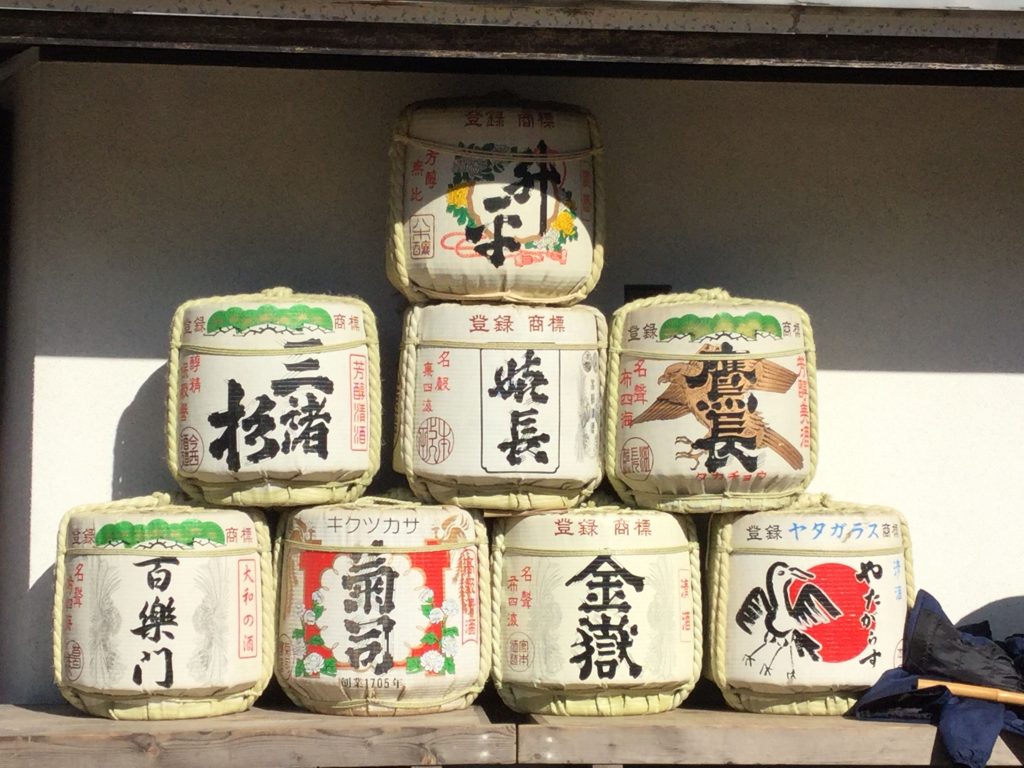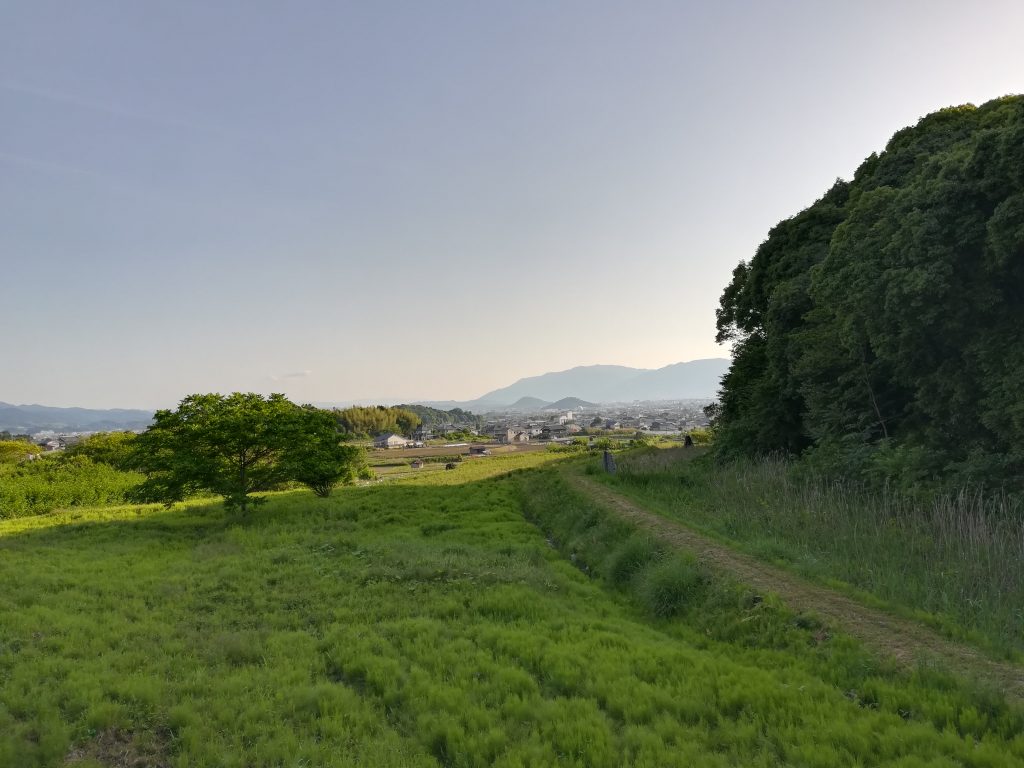Nara’s Mysterious Mt. Miwa
2021/12/24
Situated among the mountains to the east of the Nara Basin is an unusually shaped peak with a diverse forest of trees, setting it apart from the cedar tree-covered mountains that surround it. This mountain is known as Mt. Miwa and it is considered so sacred that visitors are only allowed to hike it during a time set by the managing Shinto shrine below. All photography while climbing the mountain is forbidden and visitors must stick to the trail. Mt. Miwa has a reputation for strange experiences among those who climb it, including reports of odd feelings and the occasional sighting of a mysterious white snake in the forest.
It is not unusual to see devotees climb Mt. Miwa barefooted, navigating the rocky trail with surprisingly agility and skill. In fact, the mountain itself is believed to be a god ( or “kami“) known by the name of “Oomononushi” and the Omiwa Shrine at the base of the mountain (which is devoted to the kami) is claimed to be oldest Shinto Shrine still in existence in Japan. This claim appears to be backed up by the fact that instead of having a central “house” for the god to live in as most Shinto Shrines do, the Omiwa Shrine serves as a facility for worshiping Mt. Miwa itself, which is thought to be an earlier form of shrine dating back to when they were separate cults of worship devoted to particular deities.

Mt. Miwa and the large torii gate below. A fun way to access Mt. Miwa is by renting a bicycle (such as the one shown in this picture) from Kashihara Navi Plaza.
The site of Mt. Miwa in particular saw the rise of an especially complex system of worship in past times known as “Miwa Shinto.” According to the Japan’s oldest collection of texts, the Kojiki, Japan’s first emperor, Jinmu, married the daughter of Oomononushi and their descendants became official Imperial Family of Japan. The location of Mt. Miwa, surrounded by the archeological sites of ancient capitals and huge tomb mounds, also points to relevance of the location in the formation of the country.
Center of sake
The Omiwa Shrine is a particularly important shrine for agriculture, commerce, and the tutelary shrine of sake brewing for the country of Japan. Sake brewery owners from all over the country pray at Mt. Miwa for success and take home a special traditional craft known as a sugidama (round ornaments made from pine needles) to hang up around their business. Sugidama can signify the status of the breweries sake, with green sugidama signaling that a new batch of sake has been successfully created, and a brown sugidama indicating that a batch of sake is currently being sold.

The giant torii gate of Miwa with Mt. Miwa in the background. Torii gates serve to mark off the sacred area of the deity from the world of the profane.
Visitors may notice that right outside the front torii of the the Omiwa shrine are a stack of sake barrels used for decoration. These are known as “kazari-daru” (“decorative barrels”) and are donated to the shrine by various sake breweries. The barrels are actually empty, but are usually part of a larger donation package to the shrine from the brewery, including sake donated in the form of glass bottles that are often placed before the dwelling area of the god.

A stack of kazari-daru sake barrels.
Miwa is also the name for the area surrounding the mountain and is famous for a type of very thin wheat noodle called “somen” (known here as Miwa Somen”) that is especially popular in the summertime when it is served in a bowl of chilled broth. There are a number of shops and restaurants here that serve (and sell packaged) locally made somen noodles that are definitely worth the time to check out if you are in the area.
Exploring Mt. Miwa
Mt. Miwa is easy to access as there is a train that runs directly from JR Nara Station in Nara City to JR Miwa Station in Sakurai City. The Omiwa Shrine is about a 15-20 minute walk from the station (crossing over the rail tracks and heading to the east).
If you wish to climb Mt. Miwa, you will need to go to the Sakai Sub-shrine for permission, which is just a little ways to the northeast of the main Omiwa Shrine. You must arrive before 2pm as no visitors are allowed to begin the hike after that time. According to the official rules of the shrine written on their website, at the reception window for registering you must demonstrate an ability to understand the instructions they give to you in Japanese, including writing down your name, address, phone number (valid in Japan), and emergency contact on a form. If you cannot communicate in Japanese, the shrine requires that you go with someone who can. The mountain is sometimes closed for certain special events, times of bad weather, or other reasons, so it is a good idea to confirm whether or not it is open before you go.
Please be aware that hiking Mt. Miwa is considered a religious activity, so you will be expected to respect the rules set by the shrine there, including no photography, and being mindful of the sacred atmosphere. Though the mountain is not that tall (about 460 meters), the trail is quite steep so be sure to come prepared as you would for any other hike with good shoes and something to drink. At some spots near the path and around the peak you may notice some spots with outcroppings of rock. These formations are known as as “iwagura” and are thought to be locations inhabited by deities.
Last but not least, from the base of Mt. Miwa it is easy to access the Yamanobe-no-michi, known as Japan’s oldest road. This route hugs the eastern mountain range of the Nara Basin as it makes its way north towards Tenri City, passing by many interesting historical sites (such as ancient tomb mounds, temples, and shrines) and through beautiful agricultural countryside. Visiting Mt. Miwa, or the Omiwa Shrine as part of a walk along the Yamanobe-no-michi is a great way to spend an afternoon in Nara.

View overlooking the basin from the ancient Yamanobe-no-michi route.
Access:
JR Miwa Station is the easiest way to access Mt. Miwa and its surroundings. It is possible to reach JR Miwa Station directly from both JR Nara Station in Nara City and the nearby Sakurai Station. The Miwa area is also a popular cycling destination and our bicycle rental program in Kashihara Navi Plaza is nicely positioned to supply wheels to visitors who wish to go there or the countless other interesting sites to be found in the Nara Basin.

01
FIND YOUR FAVORITE
TRIP ON OUR WEBSITE.
SEND US AN INQUIRY.

02
PERSONALIZE THE TRIP
TO YOUR INTERESTS
WITH OUR CONSULTANT.

03
20% DEPOSIT TO CONFIRM.
BALANCE PRIOR TO ARRIVAL.
PAYMENT BY CC OR TT.

04
WE WILL
MEET YOU
AT THE AIRPORT.

05
DISCOVER THE
TREASURES!